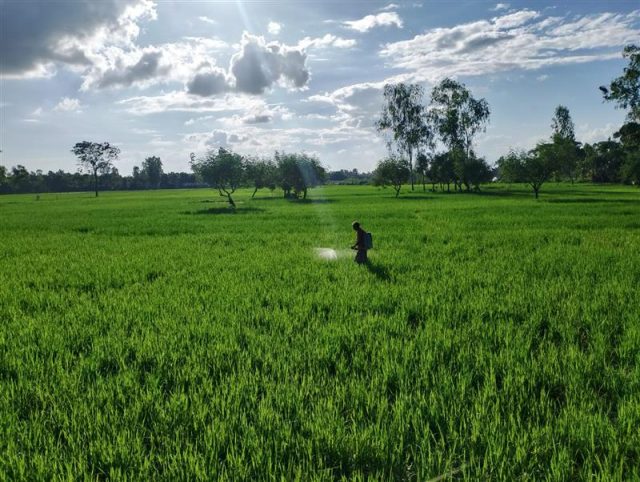Measuring the extent of a risky practice: Using toxic chemicals on cattle for tick control in Uganda
- From
-
Published on
21.02.23
- Impact Area

By Richard Ariong, Jordan Chamberlin, Sarah Wairimu Kariuki, and Bjorn Van Campenhout
OPEN ACCESS | CC-BY-4.0
The dairy sub-sector in Uganda has witnessed a remarkable transformation over the last few decades. Just ten years ago, dairy exports were negligible; today, dairy comes in third after coffee and fish as the country’s top agricultural export earner. This transformation is especially apparent in Uganda’s southwest, where a steady supply of raw milk, a broad network of milk collection centers, and the arrival of a handful of large processors have provided a promising context for dairy value chain upgrading.
Yet recently, the industry has faced a new problem—an increase in cattle tick infestations. In recent fieldwork, we heard numerous stories of farmers spraying their animals with non-veterinary pesticides and insecticides (sometimes in combination with acaricides, anti-tick veterinary medicines) to control tick infestations. While this approach sometimes works to kill ticks, it also can cause serious health issues—often fatal—for the cows being treated. These off-label “concoctions” are not only harmful for the animals, but also for the farmers applying them, and may translate into a public health hazard if they end up in milk.
Related news
-

Reinventing Kenya’s Snack Future with Dryland Grains
International Crops Research Institute for the Semi-Arid Tropics (ICRISAT)21.11.25-
Nutrition
-
Poverty reduction, livelihoods & jobs
Faces of Impact - Video Feature Story On a quiet backstreet in Mihango, Kenya, the…
Read more -
-

Cultivating climate-smart rice: How specific cultivars and smarter fertilizing can cut emissions and maintain yield
International Rice Research Institute (IRRI)19.11.25-
Climate adaptation & mitigation
-
Food security
By Bushra Humaira Sadaf A team of researchers from the Bangladesh Rice Research Institute (BRRI), I…
Read more -
-

COP30 can enable Greening Plant Nutrition in East and Southern Africa
International Rice Research Institute (IRRI)17.11.25-
Nutrition
Image creditAfrica rice farming by majimazuri21, Pixabay Licence By Jamie Males (republished from …
Read more -
